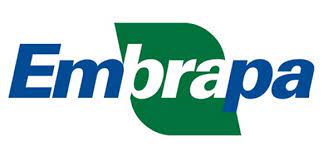TRATAMIENTO ENDODONCIAL CONVENCIONAL DE SEGUNDO MOLAR INFERIOR EN C EN FORMA DE C, UTILIZANDO LIMA PRO-DESIGN M, ALIADO AL CIERRE DE PERFORACIÓN CON CEMENTO BIOACTIVO: REPORTE DE CASO
DOI:
https://doi.org/10.47820/recima21.v4i8.3945Palabras clave:
dentaria, se encuentra dentro del sistema de conductosResumen
El tejido pulpar es el responsable de la vitalidad de la pulpa dentaria, se encuentra dentro del sistema de conductos radiculares y puede sufrir cambios, lo que puede llevar a la necesidad de una intervención endodóntica. Estos canales pueden tener variaciones anatómicas, lo que dificulta aún más el proceso de limpieza, formateo y obturación tridimensional. Entre ellos, se encuentra el denominado “canal en C”, conexión entre dos o más canales, lo que crea una gran dificultad en el proceso de instrumentación y proporciona una mayor propensión a lesiones iatrogénicas. El objetivo de este estudio fue informar el diagnóstico y tratamiento de un molar inferior #37 con periodontitis apical asintomática, que tenía un conducto radicular en forma de C. Paciente, sexo femenino, 23 años, acudió a la Clínica Docente del Instituto Nacional de Ensino Superior e Pós-Graduação Padre Gervásio – Inapós, quejándose de sensibilidad en la región mandibular izquierda. En el examen clínico se observó una extensa restauración en el diente 37. En el examen radiográfico se pudo observar una lesión periapical alrededor del ápice del elemento en cuestión. En el mismo se realizó necropulpectomía, utilizando limas pro-design M, durante la cual se produjo una perforación lateral, tratada con agregado de trióxido mineral de cemento bioactivo (MTA).
Descargas
Citas
ABU HASNA, A.; MONTEIRO, J. B.; ABREU, R. T.; et al. Effect of Passive Ultrasonic Irrigation over Organic Tissue of Simulated Internal Root Resorption. International journal of dentistry, v. 2021, p. 3130813, 2021.
ABU HASNA, A.; DE PAULA RAMOS, L.; CAMPOS, T. M. B.; et al. Biological and chemical properties of five mineral oxides and of mineral trioxide aggregate repair high plasticity: an in vitro study. Scientific Reports, v. 12, n. 1, p. 14123, 2022.
ABU HASNA, A.; PEREIRA DA SILVA, L.; PELEGRINI, F. C.; et al. Effect of sodium hypochlorite solution and gel with/without passive ultrasonic irrigation on Enterococcus faecalis, Escherichia coli and their endotoxins. F1000Research, v. 9, p. 642, 2020.
ABU HASNA, A.; PEREIRA SANTOS, D.; GAVLIK DE OLIVEIRA, T. R.; et al. Apicoectomy of perforated root canal using bioceramic cement and photodynamic therapy. International journal of dentistry, v. 2020, p. 1–8, 2020.
ABU HASNA, A.; THEODORO, A. L.; PEREIRA, L. M.; et al. Antimicrobial Action, Genotoxicity, and Morphological Analysis of Three Calcium Silicate-Based Cements. BioMed research international, v. 2022, p. 2155226, 2022.
AL-NAHLAWI, T.; ALA RACHI, M.; ABU HASNA, A. Endodontic Perforation Closure by Five Mineral Oxides Silicate-Based Cement with/without Collagen Sponge Matrix. International journal of dentistry, v. 2021, p. 4683689, 2021.
ARICIOĞLU, B.; TOMRUKÇU, D. N.; KÖSE, T. E. Taurodontism and C-shaped anatomy: is there an association?. Oral radiology, v. 37, n. 3, p. 443–451, 2021.
AYDIN, H.; MOBARAKI, S. Comparison of root and canal anatomy of taurodont and normal molar teeth: A retrospective cone-beam computed tomography study. Archives of Oral Biology, v. 130, p. 105242, 2021.
BALDONI, G. DE A.; MECCATTI, V. M.; DE CARVALHO, L. S.; et al. Antimicrobial action of psidium guajava l. extract against enterococcus faecalis and candida albicans strains: a pilot study. Arquivos de Ciências da Saúde da UNIPAR, v. 27, n. 7, p. 3484–3493, 2023.
CARVALHO, C. A. T.; HASNA, A. A.; CARVALHO, A. S.; et al. Clinical Study of Sodium Hypochlorite, Polymyxin B And Limewater Effect on MMP-3,-8,-9 In Apical Periodontitis. Brazilian dental journal, v. 31, n. 2, p. 116–121, 2020.
COOKE, H. G.; COX, F. L. C-shaped canal configurations in mandibular molars. Journal of the American Dental Association (1939), v. 99, n. 5, p. 836–839, 1979.
DOS SANTOS PEREIRA, S. R.; PEREIRA, T. C.; MECCATTI, V. M.; et al. Avaliação do potencial hidrogênio (ph) do hipoclorito de sódio em três diferentes momentos antes do seu vencimento. RECIMA21 - Revista Científica Multidisciplinar - ISSN 2675-6218, v. 4, n. 5, p. e453110, 2023.
FENELON, T.; PARASHOS, P. Prevalence and morphology of C-shaped and non-C-shaped root canal systems in mandibular second molars. Australian dental journal, v. 67 Suppl 1, p. S65–S75, 2022.
FLORES OROZCO, ESTEBAN ISAÍ; ABU HASNA, A.; TEOTONIO DE SANTOS JUNIOR, M.; et al. Case Report: Interdisciplinary management of a complex odontoma with a periapical involvement of superior anterior teeth. [version 1; peer review: 2 approved]. F1000Research, v. 8, p. 1531, 2019.
GORNI, F. G.; IONESCU, A. C.; AMBROGI, F.; BRAMBILLA, E.; GAGLIANI, M. M. Prognostic Factors and Primary Healing on Root Perforation Repaired with MTA: A 14-year Longitudinal Study. Journal of Endodontics, v. 48, n. 9, p. 1092–1099, 2022.
KATO, A.; ZIEGLER, A.; HIGUCHI, N.; et al. Aetiology, incidence and morphology of the C-shaped root canal system and its impact on clinical endodontics. International endodontic journal, v. 47, n. 11, p. 1012–1033, 2014.
KHAWAJA, S.; ALHARBI, N.; CHAUDHRY, J.; et al. The C-shaped root canal systems in mandibular second molars in an Emirati population. Scientific Reports, v. 11, n. 1, p. 23863, 2021.
LEE, S. J.; MONSEF, M.; TORABINEJAD, M. Sealing ability of a mineral trioxide aggregate for repair of lateral root perforations. Journal of Endodontics, v. 19, n. 11, p. 541–544, 1993.
LEONARDO, R. DE T.; LEONARDO, M. R. Aspectos atuais do tratamento da infecção endodôntica. Revista da Associacao Paulista de Cirurgioes Dentistas, 2012.
LYNN, E. A. Conventional root canal therapy of C-shaped mandibular second molar. A case report. The New York State Dental Journal, v. 72, n. 6, p. 32–34, 2006.
MASHYAKHY, M. H.; CHOURASIA, H. R.; JABALI, A. H.; et al. C-shaped canal configuration in mandibular premolars and molars: Prevalence, correlation, and differences: An In Vivo study using cone-beam computed tomography. Nigerian journal of clinical practice, v. 23, n. 2, p. 232–239, 2020.
NEJAIM, Y.; GOMES, A. F.; ROSADO, L. DE P. L.; et al. C-shaped canals in mandibular molars of a Brazilian subpopulation: prevalence and root canal configuration using cone-beam computed tomography. Clinical oral investigations, v. 24, n. 9, p. 3299–3305, 2020.
OLIVEIRA, L. D. DE; OLIVEIRA, F. E. DE; HATJE, B. A.; et al. Detoxification of LTA by intracanal medication: analysis by macrophages proinflammatory cytokines production. Brazilian dental journal, v. 33, n. 6, p. 36–43, 2022.
PINHEIRO, L. S.; KOPPER, P. M. P.; QUINTANA, R. M.; SCARPARO, R. K.; GRECCA, F. S. Does MTA provide a more favourable histological response than other materials in the repair of furcal perforations? A systematic review. International endodontic journal, v. 54, n. 12, p. 2195–2218, 2021.
TORABINEJAD, M.; WATSON, T. F.; PITT FORD, T. R. Sealing ability of a mineral trioxide aggregate when used as a root end filling material. Journal of Endodontics, v. 19, n. 12, p. 591–595, 1993.
Descargas
Publicado
Cómo citar
Número
Sección
Categorías
Licencia
Derechos de autor 2023 RECIMA21 - Revista Científica Multidisciplinar - ISSN 2675-6218

Esta obra está bajo una licencia internacional Creative Commons Atribución 4.0.
Os direitos autorais dos artigos/resenhas/TCCs publicados pertecem à revista RECIMA21, e seguem o padrão Creative Commons (CC BY 4.0), permitindo a cópia ou reprodução, desde que cite a fonte e respeite os direitos dos autores e contenham menção aos mesmos nos créditos. Toda e qualquer obra publicada na revista, seu conteúdo é de responsabilidade dos autores, cabendo a RECIMA21 apenas ser o veículo de divulgação, seguindo os padrões nacionais e internacionais de publicação.

 Clique para ver detalhes
Clique para ver detalhes 











